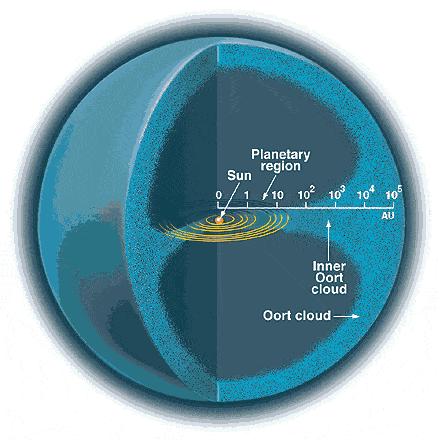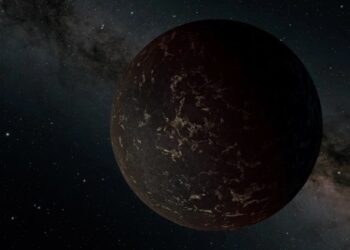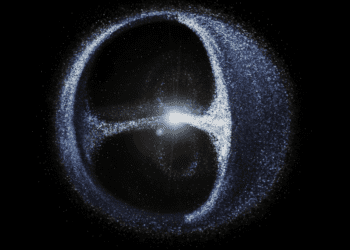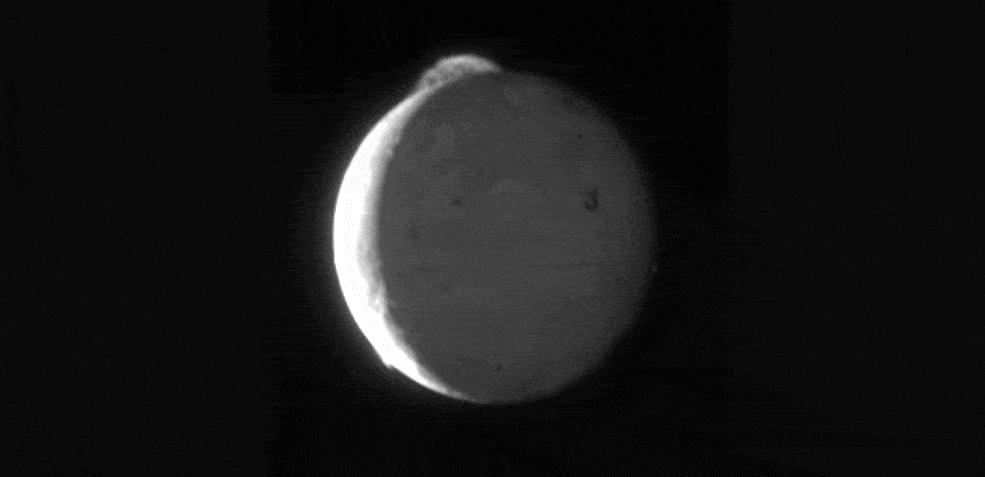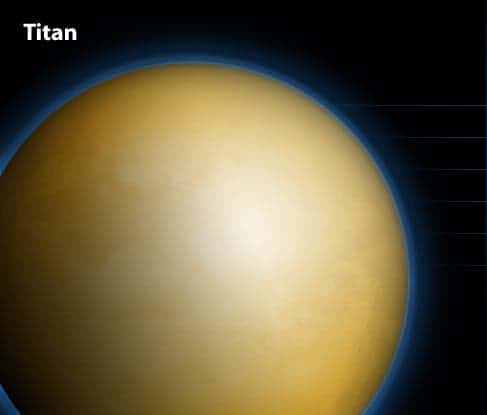It’s the outskirts of our solar system – spherical particles of rocks and ice, way beyond the familiar planets, and even the former planet Pluto, there lies the Oort Cloud – a spherical cloud of predominantly icy planetesimals that may lie roughly 50,000 AU from the Sun (AU = the distance from the Sun to the Earth).
The Holy Grail of astrophysics
Believed to be a remnant of the early solar system, there is still a lot of debate surrounding the Oort cloud – but imagine what astrophysicists could learn from studying it from close range. Unfortunately, we’re nowhere near being capable of sending a probe to such distances from the Sun; but there is still hope! If we can’t go to the Oort Cloud, maybe the Oort Cloud can come to us.
Called 2010 WG9, a trans Neptunian object never went close to the Sun, preserving its icy surface intact for an incredibly long period of time. If the theories are correct, it is basically an object that has maintained its structure since the dawn of the solar system.
“This is one of the Holy Grails of Planetary Science – to observe an unaltered planetesimal left over from the time of Solar System formation.”
Not even close to Uranus
But wait a minute, you may think – don’t comets come from the Oort cloud, shouldn’t we be worried? Well you’re right, that’s where they come from due to a gravitational perturbance – but there’s no real reason to worry. 2010 WG9 won’t ever get really close to the Sun – as a matter of fact, it won’t ever get closer than Uranus.
But things get even better! Comets are extremely hard to study, because they are surrounded by bright clouds of dust and gas, and they usually come closer to the Sun, with their original ice being evaporated and frozen again.
So while we have a really high number of objects from the Oort cloud, but we can’t really study them – and that’s when 2010 WG9 steps in! Astronomers at Yale University have observed 2010 WG9 for over two years, taking images in different filters, studying at different wavelengths. They analyzed it with four filters – B, V, R, and I, which means: blue, visible, red, and infrared wavelengths. What did they see? A quick change in color, over the cours of just a few days.
The source is what can only be described as a patchy surface – but let’s rewind a little bit. Say you have a blue filter, and you’re looking at the Earth through it – the oceans, seas, and everything blue will turn out much brighter, and anything else would appear much dimmer. So when the color is changing at 2010 WG9, that likely means that it has an exposed part, probably due to a relatively recent impact.
Rabinowitz was very keen to explain that 2010 WG9 has an unusually slow rotation: most such objects rotate every few hours, but this body from the Oort Cloud takes a stunning 11 days to rotate!The best reason for this discrepancy is that it exists in a binary system – it is tidally locked to another body, which gradually slows it. But the really valuable information is about the Oort Cloud.
“Very little is known about the Oort cloud – how many objects are in it, what are its dimensions, and how it formed,” Rabinowitz explained. “By studying the detailed properties of a newly arrived member of the Oort cloud, we may learn about its constituents.”
